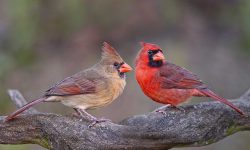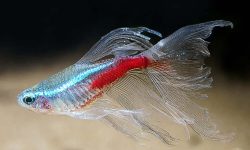The Scarlet Tanager (Piranga olivacea) is one of the most striking birds in North America. With its brilliant red body and contrasting black wings, the male Scarlet Tanager is an unforgettable sight. However, there’s much more to this bird than its vibrant appearance. From its migratory journeys to its breeding behavior and ecological role, the Scarlet Tanager holds a fascinating place in the natural world. Here are ten compelling facts that highlight the uniqueness of this forest-dwelling songbird.
Fact 1: Male Plumage Shines for a Short Season

Brightest Colors During Breeding
Every spring, as forests across North America awaken from winter, male Scarlet Tanagers undergo one of the most dramatic seasonal transformations in the bird world. They shed their muted winter feathers and molt into a dazzling display of scarlet-red body plumage, offset by jet-black wings and tail. This bold color combination isn’t just a feast for birdwatchers’ eyes—it’s a powerful visual signal designed for mate attraction and territory defense.
The intensity of the red plumage plays a critical role in courtship. Females tend to prefer males with the most vibrant, uniform coloring, which often indicates strong genetics, good health, and access to high-quality food sources rich in carotenoids. These nutrients, found in fruits and insects, directly affect how brilliant a male’s feathers can become. The brighter the red, the better his chances of securing a mate and producing offspring.
At the same time, this vivid appearance sends a message to rival males: the territory is taken, and the owner is strong and ready to defend it. During the breeding season—typically from May through early July—males are highly active, often singing from high perches in the forest canopy to advertise their presence and ward off intruders.
This bold display, however, comes with a cost: the bright plumage makes males more visible to predators. Yet in the densely leafed forests of their breeding grounds, the balance between visibility to potential mates and concealment from danger often favors brilliance.
Camouflage After Mating Season
As summer wanes and the breeding season ends, male Scarlet Tanagers undergo another molt—this time trading their fiery red feathers for a subdued olive-yellow plumage that closely resembles that of females and juveniles. This transformation is a crucial step for survival during migration.
The journey from North America to the bird’s wintering grounds in South America spans thousands of miles and includes formidable obstacles, such as a nonstop flight across the Gulf of Mexico. During this time, camouflage becomes essential. The male’s new coloration allows him to blend seamlessly into the green and brown tones of forests, thickets, and coastal woodlands encountered along the way.
This second molt typically takes place in late summer, between July and August, and is triggered by environmental cues such as daylight length and changes in food availability. By the time the birds begin their fall migration, their transformation is complete, reducing their visibility to hawks, falcons, and other aerial predators.
When they arrive in the tropical rainforests of Colombia, Ecuador, Peru, and Bolivia, males are nearly indistinguishable from females. This camouflage remains throughout the winter months, helping them stay safe while they forage on a diet rich in tropical fruits.
As spring approaches again in the Southern Hemisphere, hormonal changes signal the start of another molt. Males begin to regain their brilliant breeding plumage just in time for their return journey north—renewed, recharged, and ready for a new season of competition, courtship, and survival.
Fact 2: Females and Juveniles Are Understated
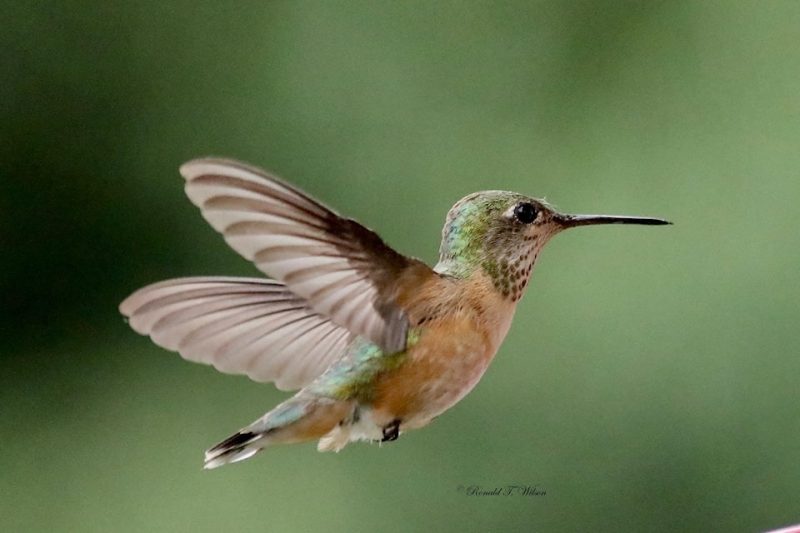
Subtle but Purposeful Coloration
While the male Scarlet Tanager’s scarlet and black plumage commands attention during the breeding season, the female tells a very different story through her appearance. Female Scarlet Tanagers maintain a consistent olive-yellow coloration year-round, a trait that may seem modest but is perfectly suited to their ecological role. This subdued palette allows them to blend seamlessly into the green canopies and shadowed understories of deciduous and mixed forests, offering essential camouflage during nesting and foraging.
This coloration is especially important during the nesting period, when females are solely responsible for incubating eggs and feeding the hatchlings. A bright, flashy appearance would make them easy targets for predators such as snakes, raccoons, and birds of prey. Instead, their muted tones serve as a natural defense mechanism, allowing them to go largely unnoticed while performing some of the most vulnerable tasks in the bird’s life cycle.
Additionally, this duller plumage helps the female maintain a low profile while gathering food, as she moves through leaves and branches in search of insects, caterpillars, berries, and other nutritional sources for both herself and her brood. In the world of survival, the less attention she draws, the better.
Juveniles Mirror the Female Look
Young Scarlet Tanagers adopt the same olive-yellow plumage as their mothers, making them nearly indistinguishable from adult females at a distance. This shared coloration serves multiple purposes, both evolutionary and practical. From an ecological standpoint, it provides juvenile birds with the same level of camouflage necessary to avoid predation during their most vulnerable stages of development.
As juveniles begin to explore their environment and practice flight, foraging, and evasion techniques, looking like a female gives them the benefit of blending into the foliage. This helps protect them from predatory birds and mammals while they are still gaining the experience and agility needed for survival.
Interestingly, this resemblance lasts through the young birds’ first fall migration, and it isn’t until the following spring that young males begin to molt into their characteristic red-and-black plumage. Until then, they continue to benefit from the protective disguise of their juvenile feathers.
This strategic coloration is a clear example of natural selection at work—favoring traits that increase the odds of survival in young birds and non-breeding adults. While the males may dazzle for a brief season, the female and juvenile Scarlet Tanagers embody the power of subtlety, blending into the forest in a way that ensures their continued safety and the species’ success.
Fact 3: Scarlet Tanagers Are Long Distance Migrants

Breeding Grounds in North America
During the warm months of spring and summer, Scarlet Tanagers make their home across the deciduous forests of eastern North America. Their breeding range stretches from southern Canada through the Great Lakes region, down into the Appalachian Mountains, and across the Midwestern and Northeastern United States.
These birds are especially selective when it comes to nesting habitat. They strongly prefer large, continuous tracts of mature forest—areas with a dense canopy, tall hardwood trees like oaks and maples, and minimal human disturbance. The dense tree cover provides ample protection from predators, as well as the insect-rich environment needed to feed their young.
Their preference for deep, unbroken woodlands also makes Scarlet Tanagers vulnerable to habitat fragmentation. As forests are cleared for agriculture, development, or roads, their nesting success declines. This is why their presence often signals a healthy forest ecosystem.
Wintering in South America
When the days grow shorter and cooler in late summer, Scarlet Tanagers prepare for one of the most impressive migrations in the songbird world. These birds travel more than 4,000 miles from their breeding grounds in North America to their wintering habitats in northwestern South America.
Their winter destinations include the lush, humid rainforests of Colombia, Ecuador, Peru, and Bolivia. Here, in the lowland tropical forests and foothills of the Andes, they spend several months feeding on fruit, insects, and nectar in dense vegetation far from the forests where they nested.
The journey to South America is long and perilous. One of the most challenging segments of their migration involves a nonstop flight across the Gulf of Mexico, which can take up to 18 hours depending on weather conditions. This overwater leg is risky—especially if storms arise or birds are unable to find suitable stopover sites on either end. Many tanagers fly at night to avoid heat and predation, using the stars and Earth’s magnetic field to guide them.
Despite their small size—just over 6 inches long—Scarlet Tanagers are strong, determined fliers, capable of completing this extraordinary journey twice each year. Their ability to traverse two continents, multiple ecosystems, and thousands of miles highlights not only their resilience but also the importance of conserving habitat in both their breeding and wintering grounds.
Protecting this migratory route requires international cooperation and a commitment to preserving the forests these birds rely on year-round. From the wooded ridges of Pennsylvania to the rainforests of the Andes, the Scarlet Tanager’s journey is a breathtaking natural phenomenon that reminds us of the interconnectedness of global ecosystems.
Fact 4: Forest Interiors Are Their Preferred Habitat
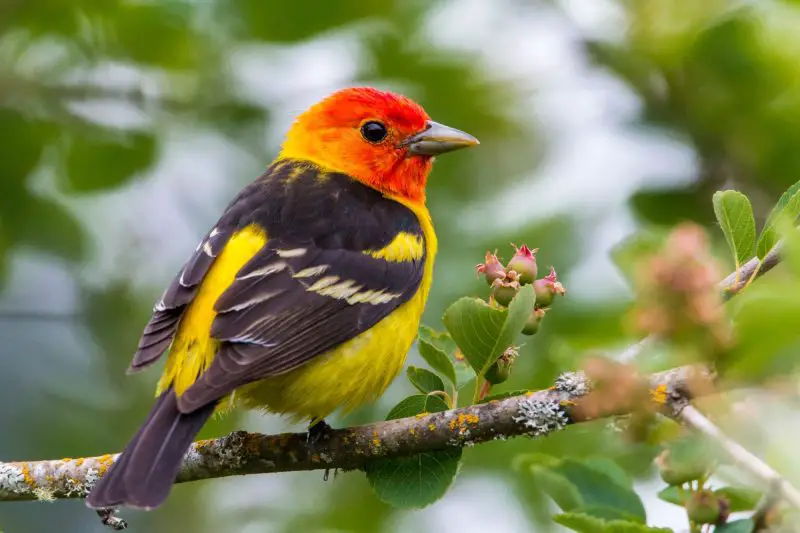
Dependence on Mature Woodlands
Scarlet Tanagers are known as forest interior specialists, meaning they thrive deep within large, continuous tracts of mature forest rather than at the edges or in fragmented woodlots. Their ideal habitat is made up of deciduous or mixed hardwood forests featuring tall, mature trees with thick canopies and minimal human disturbance. This preference plays a vital role in their survival, particularly during the breeding season.
The interior of the forest offers several key advantages. First, the dense canopy cover provides excellent protection from predators like hawks, snakes, and raccoons, especially important when females are nesting or feeding chicks. Second, these woodlands support a rich diversity of insects, the Scarlet Tanager’s primary food source during the spring and summer months. They consume large quantities of beetles, caterpillars, ants, and wasps, all of which are more abundant in healthy, undisturbed forest ecosystems.
These birds typically build their nests high in the upper branches of trees, carefully hidden among leaves to avoid detection. The height and seclusion offered by mature trees are critical to protecting eggs and fledglings from predators and harsh weather. Even their foraging behavior is adapted to this setting—they often move quietly through the middle to upper layers of the forest, gleaning insects from foliage and occasionally sallying out to catch flying prey.
Without these deep forest conditions, Scarlet Tanagers struggle to reproduce successfully. Unlike some bird species that have adapted to urban parks or suburban gardens, tanagers are sensitive to disturbance and need undisturbed habitat to thrive.
Vulnerability to Habitat Fragmentation
One of the greatest threats facing Scarlet Tanagers is habitat fragmentation—the process where large forests are broken up into smaller patches by roads, development, or agriculture. When forests are fragmented, the remaining woodland is often smaller, more isolated, and surrounded by open spaces or human-altered landscapes.
Scarlet Tanagers instinctively avoid forest edges, where exposure to predators, brood parasites like cowbirds, and human activity is greater. Edges are also windier and experience more temperature variation, which can be harmful to delicate nests. As a result, when forest tracts are broken apart, the birds may be pushed into suboptimal habitats or forced to compete more intensely for fewer safe nesting sites within the remaining interior space.
In fragmented habitats, tanagers face a higher rate of nest predation and parasitism, which can significantly reduce their reproductive success. Brown-headed cowbirds, for instance, often lay their eggs in tanager nests near forest edges, leading to decreased survival rates for tanager chicks.
Furthermore, fragmentation increases the risk of collision with man-made structures, especially during migration. Roads, power lines, and urban lighting all pose additional hazards that tanagers would rarely encounter in deep forests.
To support Scarlet Tanager populations, conservationists emphasize the need to preserve large, connected tracts of forest and restore fragmented woodlands through reforestation and land management practices. Keeping forests intact benefits not only tanagers but a wide range of other forest-dependent species, making it a cornerstone of broader biodiversity conservation efforts.
Fact 5: Their Song Echoes Through the Trees
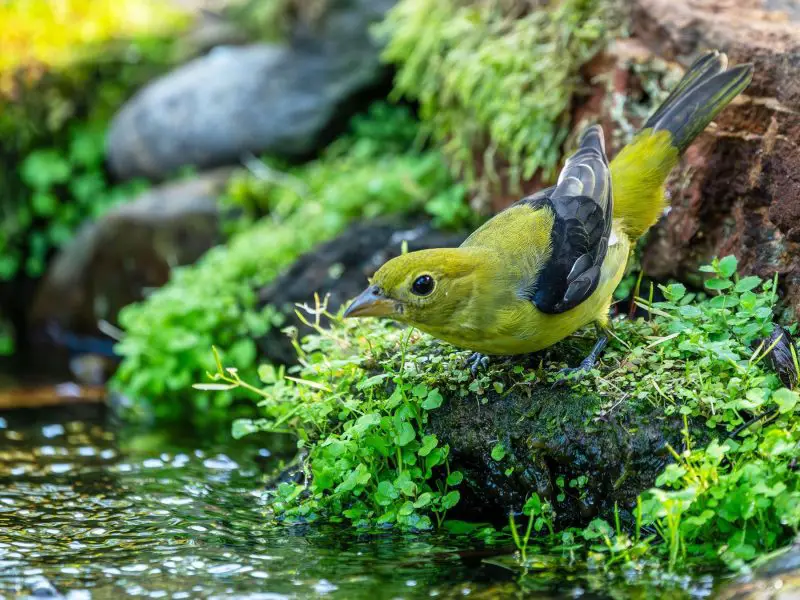
Subtle Yet Distinctive Song
The Scarlet Tanager may be one of the most brilliantly colored songbirds in North America, but its voice is far more modest. The male’s song consists of a series of short, raspy, and burry phrases, often likened to a “robin with a sore throat.” These phrases are delivered in a hurried, slightly slurred manner, and though they lack the musical clarity of a thrush or warbler, they are distinctive once recognized.
Sung primarily during the breeding season, this song serves multiple purposes. It helps mark territory, ward off rival males, and attract a potential mate. Unlike more melodic songbirds, the Scarlet Tanager’s voice doesn’t pierce the forest air, but rather blends subtly into the ambient noise of the forest canopy, often requiring a trained ear to detect.
Males usually sing from high perches near the top of tall trees, making it even more difficult for birdwatchers to pinpoint their location. This elevated singing spot not only maximizes the song’s reach across the forest but also keeps the singer hidden from view, protected among the leaves.
What’s remarkable about their vocal behavior is how the volume and rhythm can shift depending on the situation. When defending territory or responding to another male, the phrases may become more insistent. When courting a female nearby, the song may be delivered more softly and frequently.
Alarm and Contact Calls
Beyond their mating song, Scarlet Tanagers use a variety of sharp, distinctive calls to communicate in daily life. The most common are the “chip-burr” or “chik” calls—short, percussive notes that serve as contact signals and alarm warnings.
Both males and females employ these calls during feeding, especially when moving through the forest with fledglings. They act as auditory beacons, helping birds locate one another among dense foliage, especially when visibility is low.
These calls also play a crucial role in predator detection and evasion. When a threat is spotted—whether a hawk overhead or a raccoon approaching the nest—Scarlet Tanagers give a series of urgent “chik-chik” notes to alert their mate or offspring. The tone and repetition of these calls can even signal the level of danger, allowing other birds nearby to react accordingly.
Interestingly, the female may modify her calls subtly when feeding chicks, using softer and more rhythmic patterns to maintain calm in the nest while still keeping track of her surroundings. Juveniles, too, begin to use quiet versions of these calls as they learn to interact with their parents and siblings.
Though the Scarlet Tanager is not the most celebrated songbird in terms of melody, its vocalizations are finely tuned to the demands of its environment—subtle but purposeful, low in volume yet rich in meaning. Their calls echo through the forest in ways that enhance survival, reproduction, and social bonding.
Fact 6: Diet Changes with the Seasons
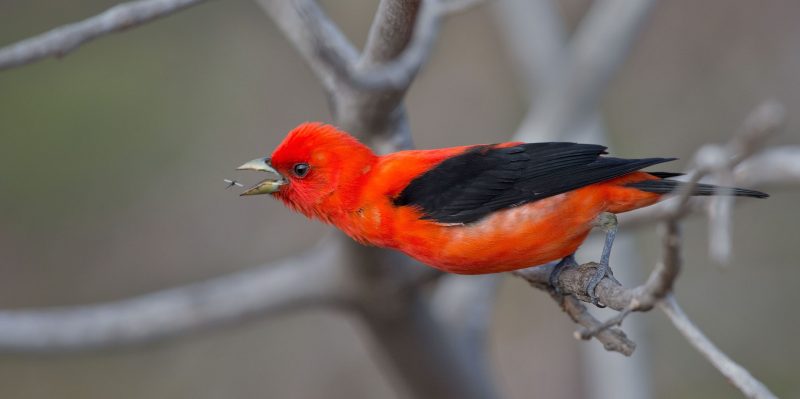
Insect-Based Diet During Breeding
Scarlet Tanagers are primarily insectivorous during the spring and summer months, especially throughout their breeding season in North America. Their diet includes a diverse array of invertebrates such as beetles, ants, wasps, caterpillars, grasshoppers, moths, and spiders. These protein-rich meals are crucial not only for adult sustenance but also for feeding their growing chicks, who require large quantities of soft-bodied insects in their first weeks of life.
Tanagers forage methodically through the forest canopy, often hopping along branches or darting out to snatch insects midair in a behavior known as “sallying.” They’re also skilled at gleaning prey from foliage and bark, using keen eyesight and quick reflexes to detect even the most camouflaged insects.
Their reliance on insects also ties them closely to forest health and biodiversity. A rich supply of native insects supports not just adult tanagers, but the entire breeding cycle. As forests are disturbed or fragmented, the decline in insect populations can have a direct impact on tanager reproductive success.
This insect-based diet is especially important during territorial defense and nesting, when energy demands are highest. The abundance of insects during the warmer months provides the nutritional boost they need to sing, mate, raise chicks, and prepare for the long migration ahead.
Fruit-Based Diet in the Winter
Once Scarlet Tanagers complete their southward migration to the tropical forests of northern and western South America, their diet shifts dramatically. In these lush ecosystems, insects become less abundant due to seasonal changes, so tanagers transition to a fruit-based diet rich in berries, soft fruits, and occasionally nectar.
This dietary flexibility is one of the keys to their survival during winter. Tropical forests offer a year-round supply of native fruiting plants, and Scarlet Tanagers readily exploit this bounty, often feeding alongside other fruit-eating birds like orioles, thrushes, and honeycreepers.
Fruits such as figs, guavas, and various small rainforest berries provide not only essential sugars and carbohydrates but also important fats—a vital resource for maintaining body condition and fueling the return migration to North America in spring. These fats are stored in the body and used as energy reserves during the physically demanding flight across thousands of miles.
Moreover, their fruit-eating habits contribute to seed dispersal, making Scarlet Tanagers important ecological agents in their winter habitats. As they consume fruit and excrete seeds elsewhere, they help regenerate and maintain healthy tropical forest ecosystems.
The ability to switch between an insect-heavy summer diet and a fruit-dominated winter diet showcases the adaptability of the Scarlet Tanager. This seasonal shift ensures their nutritional needs are met year-round and illustrates their deep ecological ties to both North and South American forests.
Fact 7: Unique Molting Cycles

Post Breeding Complete Molt
At the end of each breeding season, Scarlet Tanagers undergo a complete molt, shedding and replacing all of their feathers, including those on the wings and tail. This full-body renewal typically begins in late summer, after their nesting duties are complete and before they embark on their southward migration.
Molting is an energetically demanding process, but it’s essential for maintaining feather quality and flight efficiency. Feathers become worn, damaged, or faded over time due to exposure to sunlight, weather, and physical activity. For a bird that must fly thousands of miles across continents, fresh, structurally sound feathers can make the difference between survival and exhaustion.
During this time, males molt out of their brilliant scarlet and black plumage and take on an olive-yellow coloration similar to that of females and juveniles. This duller appearance provides natural camouflage, reducing visibility to predators during the vulnerable weeks of migration preparation.
The complete molt typically occurs over a few weeks, during which time the birds may remain more secretive and less vocal as they focus on feather regeneration and energy conservation.
Pre Breeding Partial Molt
While wintering in tropical South American forests, Scarlet Tanagers undergo a second, partial molt known as the pre alternate molt. Unlike the complete molt in late summer, this one focuses primarily on body feathers, especially in males. The timing of this molt is aligned with their biological preparation for the next northward migration and breeding season.
During this process, male tanagers begin to regain their vivid breeding plumage—the bold scarlet-red body feathers contrasted by jet-black wings and tail. This transformation doesn’t happen all at once but progresses over several weeks, often beginning in late winter or early spring.
The restoration of bright coloration is critical for mate attraction and territorial display upon arrival in North America. Since many males reach their breeding grounds slightly ahead of females, showing up in peak condition with fully developed plumage gives them a competitive edge in courtship.
Interestingly, this seasonal color shift isn’t just about aesthetics. The restored red feathers contain carotenoid pigments, which are obtained from the birds’ diet and may also reflect a male’s overall health and fitness. Brighter, more saturated feathers signal genetic quality and foraging success, making them more attractive to potential mates.
The combination of a complete molt after breeding and a partial molt before breeding is unusual among North American songbirds, highlighting the Scarlet Tanager’s unique adaptation to a long-distance migratory lifestyle. These molting strategies ensure that they are optimally equipped for both survival and reproduction as they move between vastly different environments each year.
Fact 8: Nesting Habits Are Highly Strategic
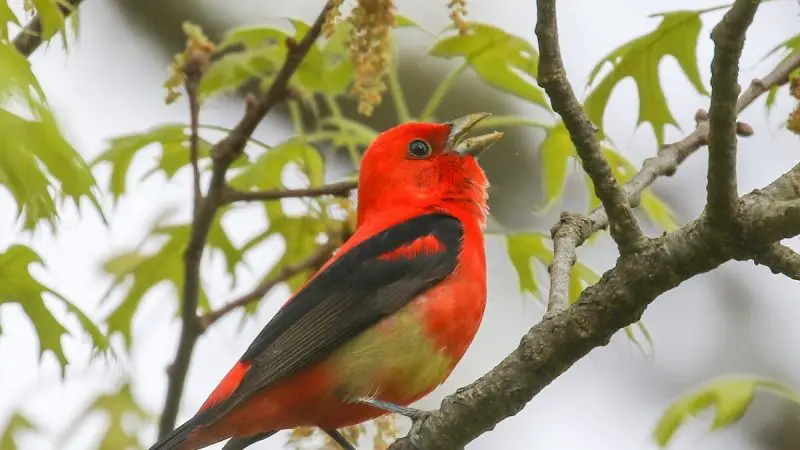
Well Hidden Nest Construction
Scarlet Tanagers are exceptionally selective nesters, choosing nesting sites that maximize both safety and environmental camouflage. Nest construction is carried out entirely by the female, who seeks a high horizontal branch in the mid to upper canopy—usually 20 to 60 feet above ground—to reduce exposure to ground predators and limit visibility from aerial hunters.
She often places the nest near the end of a limb, where foliage is densest, offering natural protection from both predators and inclement weather. This positioning also minimizes competition from other cavity nesters or open nesters using trunk forks or lower branches.
The nest itself is a loosely woven cup-shaped structure, crafted with remarkable skill and resourcefulness. The female uses a combination of twigs, grasses, bark strips, rootlets, pine needles, and sometimes even spider webs to bind and cushion the structure. The interior lining is often softer and finer, ensuring a comfortable and insulated environment for the eggs and hatchlings.
This lightweight but sturdy nest is built with the intention of blending seamlessly into the leafy canopy. Unlike some bird species that build bulky or exposed nests, the Scarlet Tanager’s approach is to remain as inconspicuous as possible, helping the nest avoid detection by predators such as jays, crows, snakes, and squirrels.
Eggs and Incubation Period
Once the nest is complete, the female lays a clutch of three to five eggs, each pale blue or greenish in color, sometimes speckled with dark reddish or brown markings. These natural patterns serve as camouflage, helping the eggs blend into the shadowy interior of the nest and further reducing predation risk.
The female is solely responsible for incubation, which lasts approximately 12 to 14 days. During this time, she remains quiet and low-profile, leaving the nest only briefly to feed or stretch. Her subdued olive-yellow plumage helps her remain almost invisible against the canopy’s dappled light.
While she incubates, the male plays a supportive but vigilant role. Though he does not take part in incubation, he often remains nearby to watch for predators, and may bring food to the female, especially in poor weather or during peak incubation periods. His presence acts as a deterrent against threats and allows the female to devote maximum energy to egg development.
After hatching, both parents take part in feeding the chicks, bringing a steady supply of soft insects and small arthropods. Chicks fledge in about 9 to 12 days, though they remain dependent on their parents for food and protection for several more weeks as they learn to forage and fly.
The strategic nesting behavior of the Scarlet Tanager is a fine example of evolutionary refinement. Every aspect—from site selection to nest design to incubation practices—is geared toward increasing the odds of reproductive success in a challenging forest environment.
Fact 9: Conservation Concerns Are Growing
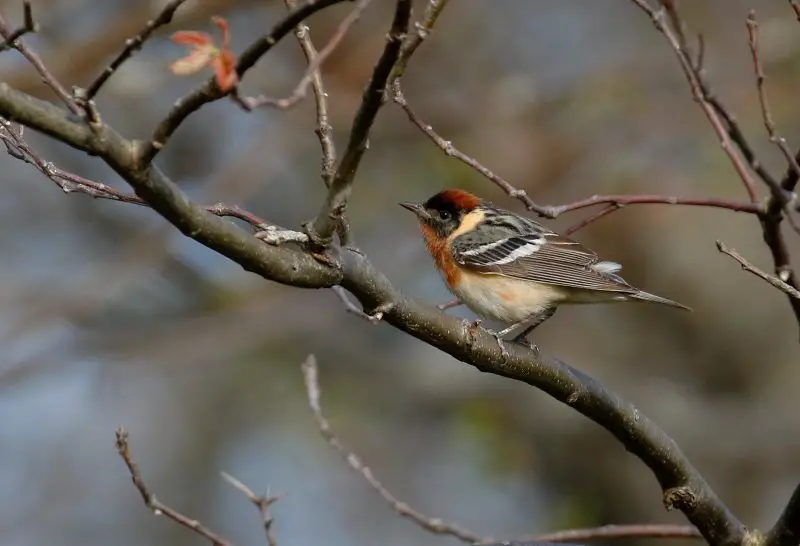
Gradual Population Decline
Despite being relatively widespread across their breeding range, Scarlet Tanagers are facing a gradual yet concerning population decline. According to long-term bird monitoring data from organizations like the North American Breeding Bird Survey, numbers have been dropping consistently over the past several decades.
The primary cause is habitat loss, particularly in their North American breeding grounds. Large-scale deforestation, urban sprawl, and agricultural expansion have all contributed to the fragmentation of mature deciduous forests—the Scarlet Tanager’s preferred habitat. This fragmentation not only reduces available nesting sites but also increases vulnerability to predators and nest parasitism by species like the Brown-headed Cowbird.
In addition to habitat degradation, human-built structures pose direct threats. During migration, Scarlet Tanagers are at high risk of collisions with windows, towers, and other buildings, especially during night flights. Light pollution can disorient them, making it harder to navigate and increasing mortality rates.
Another critical issue is pesticide use. Since the species relies heavily on insects for food during the breeding season, the widespread use of insecticides in forests and agricultural areas reduces food availability and may expose tanagers to toxic chemicals, impacting both adult survival and chick development.
The cumulative effects of these threats are not yet catastrophic, but they signal a clear need for proactive conservation efforts before more serious declines occur.
Conservation Efforts and Recommendations
Conservationists and ornithologists are actively working to protect the Scarlet Tanager by addressing both local and migratory threats. One of the most effective strategies is the preservation and restoration of large tracts of mature, contiguous forest, especially across the northeastern United States and southeastern Canada—key breeding areas for the species.
Land management practices that promote forest health and diversity—such as selective logging over clear-cutting, maintaining underbrush, and allowing forest regeneration—help maintain suitable nesting and foraging habitats.
Reducing light pollution, especially in major migratory flyways and urban centers, can significantly reduce disorientation and collision-related deaths. Simple measures like using motion-sensor lighting, dimming unnecessary lights at night, and installing bird-safe window designs can have a meaningful impact.
In addition, international cooperation is essential, as Scarlet Tanagers spend half the year in South America, particularly in the Andes region. Supporting sustainable agricultural practices and preserving tropical forest habitats in countries like Colombia, Ecuador, and Peru is equally crucial for their survival.
Citizen science platforms like eBird and Project FeederWatch empower everyday bird enthusiasts to contribute valuable data on sightings, behavior, and population changes. This grassroots engagement helps researchers track long-term trends and identify emerging threats more quickly.
Conservation education also plays a key role. Raising public awareness about the Scarlet Tanager’s ecological role and the challenges it faces can lead to more bird-friendly policies and community action. Encouraging native landscaping, limiting pesticide use in home gardens, and supporting local conservation organizations all contribute to the broader effort.
The Scarlet Tanager may not yet be endangered, but its slow decline is a warning signal. Protecting this stunning songbird requires a collaborative, science-driven, and globally minded approach—one that recognizes the importance of preserving biodiversity across entire migratory journeys.
Fact 10: An Ecological Indicator Species
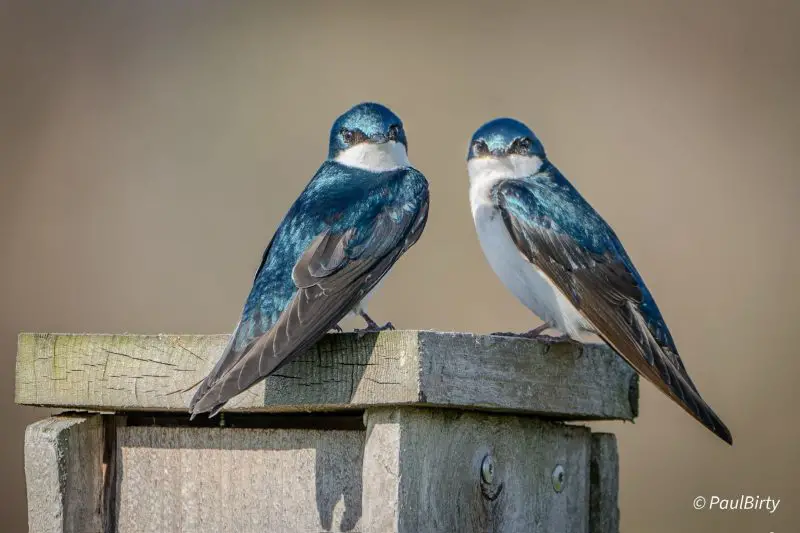
Measuring Forest Health
Scarlet Tanagers are widely recognized by ecologists and conservation biologists as an indicator species, meaning their presence is a strong signal of ecosystem integrity, particularly in mature deciduous and mixed forests. Because these birds are highly sensitive to environmental changes, such as habitat fragmentation, pollution, and declines in insect populations, their population trends can serve as early warning signs of forest degradation.
Healthy Scarlet Tanager populations usually indicate that a forest remains undisturbed, biologically diverse, and well-connected, with a stable food web and limited human intrusion. Conversely, a noticeable decline in their numbers may point to issues such as invasive species presence, pesticide overuse, or significant habitat disruption.
Researchers often include Scarlet Tanagers in long-term avian monitoring programs, using data about their nesting success, abundance, and geographic range to assess broader environmental conditions. Since they depend on both breeding grounds in North America and wintering grounds in South America, they also reflect the health of multiple ecosystems across continents.
Their indicator status has made Scarlet Tanagers especially valuable in conservation planning, helping policymakers and land managers identify priority areas for preservation and restoration efforts.
Role in Ecosystem Balance
Beyond their value as environmental barometers, Scarlet Tanagers play an active role in maintaining forest health. Their diet, which shifts between insects and fruit depending on the season, makes them both insect predators and seed dispersers—key functions that support biodiversity and forest regeneration.
During the breeding season, Scarlet Tanagers consume large quantities of insects, including beetles, caterpillars, grasshoppers, ants, and wasps. This helps to regulate insect populations, keeping outbreaks in check and reducing pressure on native vegetation. In particular, their appetite for defoliating insects like caterpillars contributes to healthier tree canopies and improved plant productivity.
In their tropical wintering grounds, Scarlet Tanagers shift to a fruit-based diet, which includes a wide variety of native berries and soft fruits. As they move from tree to tree, they inadvertently spread seeds over wide areas, aiding in natural forest regeneration and plant diversity.
Their selective nesting behavior also influences forest structure. By favoring high, dense foliage in undisturbed woodlands, they reinforce the value of old-growth and second-growth forests, encouraging conservation of vertical complexity and layered forest canopies.
In short, Scarlet Tanagers don’t merely survive within forest ecosystems—they actively contribute to their stability and resilience. Whether by eating pest insects, dispersing seeds, or simply signaling when a forest is under stress, these vibrant songbirds serve as a quiet yet vital thread in the fabric of forest life.
Why Scarlet Tanagers Captivate Bird Enthusiasts
From their seasonal color transformations to their incredible migrations, Scarlet Tanagers are a marvel of nature. Their ability to survive and reproduce across thousands of miles of forest makes them one of the most remarkable songbirds in North America. For birdwatchers, spotting one is often the highlight of a spring or summer outing.
Field guides, birding apps like Merlin and eBird, and patient listening skills all improve your chances of encountering this forest gem. Early morning hikes through deciduous woodlands during peak migration months—May and June—are ideal times to search for them.
How to Help Scarlet Tanagers Thrive
You can support Scarlet Tanager conservation efforts by protecting local forests, reducing pesticide use, planting native trees and shrubs, and supporting wildlife-friendly land policies. Even simple actions, such as turning off outdoor lights during migration seasons, can help reduce bird collisions and disorientation.
Engaging with organizations like the American Bird Conservancy, National Audubon Society, or Cornell Lab of Ornithology connects you to ongoing projects that safeguard bird habitats across the hemisphere.
Conclusion: The Enduring Mystery of the Scarlet Tanager
Scarlet Tanagers remind us of the delicate balance between nature’s beauty and its fragility. These birds traverse continents, shift diets, adapt plumage, and live in harmony with complex forest ecosystems. Their continued survival depends on the protection of woodlands, sustainable human practices, and our willingness to preserve the natural world.
Whether you’re a lifelong birder or just someone who appreciates a flash of red in the trees, the Scarlet Tanager stands out as a symbol of resilience and wonder. They offer a vivid reminder of the seasonal rhythms that tie the Americas together—from the birch groves of Canada to the rainforests of Peru.





